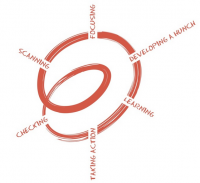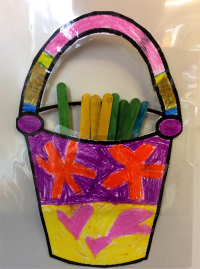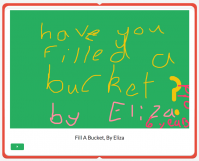Utilising Spirals of Inquiry to develop students' emotional intelligence through digital story telling
Tags: Teacher inquiry | Communication | Lower primary | Primary |
Year one students at Lyttleton School share their learning through digital stories, which provide students, teachers, parents, and whānau with a common language to discuss relating to others and managing self.
Background
Teacher, Francie Graham used Halbert and Kaser’s Spirals of Inquiry (2013) framework to explore the development of empathy and emotional intelligence of students in her year one class. As part of Lyttleton Primary School professional learning and development, Francie was supported by a facilitator to formulate and work through a spiral of inquiry over three terms in 2014.
Following the Christchurch earthquakes and the merge between Lyttelton Main School and Lyttelton West School to create Lyttleton Primary School, Francie realised the importance of students developing emotional intelligence to cope with anxiety, solve problems, and take ownership of their learning.
Beginning the inquiry
In order to grow citizenship and improve the educational experiences of her year one students, Francie inquired into whether developing empathy was age specific, and if this concept could be taught to six and seven year old children.
“Kids who are better able to manage their emotions can pay attention better, take in information better, and remember better. In other words, it helps you learn better.”
Francie had a “hunch ” that the implementation of particular key competencies and values from the New Zealand Curriculum in her teaching programme would help to address some of the students’ anxiety. She focused on two of the key competencies in particular:
- Relating to others
- Managing self
Her research revealed:
- definite stages in learners’ development
- emotional intelligence can be taught
- parents have a strong influence on developing empathy and emotional intelligence.
Supporting students to develop the ability to practise empathy, build emotional intelligence, and improve learning
Francie provided students with the opportunity to discuss and describe playground and classroom “issues” (things that did not make themselves or others feel good). They were able to express and explore associated feelings or emotions that were occurring as a result of these issues. Francie was struck by how many issues arose and how many were offered by the boys.
Following these discussions, students explored constructive solutions expressing new ideas and approaches in regard to sorting out issues and relating to others productively.
Francie employed the techniques of bucket filling and digital storytelling to improve students' sense of self, build and improve relationships, and make the impact of actions and words visible. Students gained the confidence to handle some of their own problems as they identified and appreciated acts of empathy.
Bucket filling technique
Francie read the picture book, Have you filled a bucket today? – A guide to daily happiness for kids by Carol McCloud to her class. They explored the concepts within the book of positive behaviour and empathy expressed through acts of kindness, appreciation, and love. They created a visual tool in the form of buckets and collaboratively developed a self-managed system of bucket filling. Every time someone carried out, or witnessed, an act of kindness or empathy they put a popsicle stick in their own or others’ buckets. This led to students:
- recognising the positive actions of others
- self-regulating their own actions
- developing more positive attitudes to individuals and groups of people
- developing a sense of mana and manaakitanga
- building strategies for solving problems.
Digital storytelling
Students shared their learning about growing empathy for others through bucket filling by creating digital stories, which they shared at assemblies. The stories were made accessible for other classroom teachers to use with their students.
Sharing the digital stories about bucket filling provided parents and whānau with a new, simple common language to discuss empathy, relating to others, and managing self.
Parents were surveyed as part of the inquiry to discover if the new learnings were having an impact at home as well as at school.
“My daughter is a changed child."
Parent feedback
Francie entered her students’ stories in the Tell a Tale DigiAwards 2014 ripple effect category; a values-based, social-good category that promotes citizenship and the concept of service learning. One story placed first in the year 1-3 group.
Teacher reflection
Francie found it took a lot of discussion, modelling, and practice for students' level of empathy and emotional intelligence to develop. Creating and sharing digital stories allowed students to share their thoughts and ideas with peers, parents, and the wider school community. These stories reflected the students' growing understanding of the importance of managing self and relating to others in positive ways. The inquiry resulted in a positive impact on both students’ behaviour and learning. Students now express that they can take action to help create their own future.
"Future focus is about supporting learners to recognise that they have a stake in the future, and a role and responsibility as citizens to take action to help shape that future."
ERO, The New Zealand Curriculum principles: Foundations for curriculum decision-making (July 2012)


